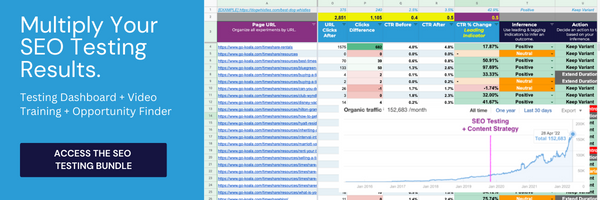It’s been two years since I joined Tipalti. Here, I’m going to share my very best lessons and takeaways that I’ve learned during my time in high-growth SaaS.
1. Great messaging is not about your product, it’s about your customers.
I’ve fallen into this trap. Most marketing strategists have fallen into this trap at some point or another. And most companies are still elbow-deep in this trap (👈 differentiation opportunity for you).
It’s a trap that Brian Regan calls, “The Me Monster.”
The trap is: talking about our superior product features and awards instead of molding our messaging strategies around our customers.
Shoutout to Pedro Cortés for this framework.
Now, this does not mean that talking about our product and awards is a negative thing. Far from it. I love a good social proofing section as much as the next marketing guy. But the “me monster” should be secondary, or maybe even tertiary in relation to the customer’s interests.

The truth is, our customers don’t care about us. They care about what we can do for them. So why are we leading with our own very biased point of view of ourselves, when we could instead focus our messaging on the reasons our customers need us? Namely:
- Their pain points [the need that our product fills].
- Their objections [getting ahead of the reasons they might not convert before they bounce].
- How your product is the perfect solution for them [not why it’s better than the competition, but why it’s a fit for the customer].
After you’ve made a connection with your target audience, then you can sprinkle in those lovely awards, social proof, and product features to help seal the deal.
The customer’s POV is the cake. Our features are the sprinkles.
2. Hiring a mediocre agency or tech solution is one of the most costly mistakes your marketing team can make.
I realize not all companies will have enough budget to work with top-tier agencies, or to install top-tier tech, so it’s important to work within your means, but I maintain that mediocre partnerships are the most costly mistake I’ve seen while working in SaaS.
When you engage in either of these relationships, be it an agency relationship, or a solutions relationship, you aren’t just putting company dollars on the line, you’re putting your own heavily-commoditized time on the line.
I’m talking weekly/monthly calls, emails, meetings within your tech team, your leadership team, SOWs with legal, invoices, etc.
And after all of that, they will probably still try to upsell you because most partnerships are focused on their own growth.
The equation that every external relationship must fit looks like this:
Their Results >
Your $$$ + Your Time + Your Team’s Time + Opportunity Cost (i.e. what you could have achieved during the time they occupied)
If this equation doesn’t come out in the positive, you’ve lost.
Every SaaS needs partnerships, but you can’t afford to play the partnership game loosely.
3. The best way to get your SEO dream team is to build it externally with an SEO budget.
Now, I am biased, but it’s my belief that two of the most resource-intensive programs within a Demand Gen team will be SEO and CRO. I haven’t worked for a non-SEO professional in my life who didn’t have inflated expectations about what the channel can achieve with low-resources.
Fortunately, I happen to be lucky enough to work for a company that has backed me up in each of these programs with competitive quarterly budgets and internal support, and even with my team as stellar as they are, expectation management is still a part of the job.
Still, it would be impossible for our team to succeed if I were to rely on an internal hiring process for resource growth.
- It takes too long to make a hire.
- Your leaders won’t know which people you need.
- More likely than not, the company will ask you to get your resources cross-functionally as opposed to dedicated, which usually amounts to roughly 5% of a shared resource.
- Internal hires spend a lot of their time in communications, and not enough of their time GSD’ing.
Early on, I began to build my SEO processes around external freelancers whom I could manage more directly, and build processes around.
While it sounds like the dream to hire all of these needs internally, there’s no way we could have achieved fast growth via the company’s internal hiring process.
Freelancers have a few cons in comparison to full-time hires, but I’m a big believer in my freelancers and I always will be.
4. Learning how to manage up and across is difficult and time-consuming, but vital.
I have to admit, managing up is a skill that took me a very long time to learn. It just didn’t come naturally to me at first, so I’ve had to put a lot of personal work into honing this as a soft skill.
Now that I’ve had the chance to step into a leadership role, myself, it’s a lot easier to understand why. And I think I’ve been getting a little better at it.
If I had to break down what I’m doing differently now that I didn’t do well before, it would be this:
Employees must, must, must empathize with their leaders.
It’s easy to doubt the people you work for.
It’s easy to think that they’re wrong, and that you’re right, and that you could do it better than them.
But are you sure? Do you know how much time your leaders put in to build your success? Do you know what weaknesses you might bring to the job if you were in their shoes?
Don’t be arrogant. Yes, some leaders are legitimately awful, but some of the really good leaders still don’t get the recognition they deserve.
If you can learn how to empathize with your leaders, and try to make their jobs easier, managing up (and across) gets much better for everyone on the team.
5. Report on your data early and often. If you think you’re reporting enough, do more of it.
You could be building the most kickass program, getting a ton of wins, and producing a massive output. But if your leadership team never hears about it, you’ll be lost in the noise. Sometimes, even to the point of your leaders wondering what you do with your time all day long.
And SaaS is NOISY.
The sales team needs this. The product team needs that. There’s a big event coming up. It’s end of quarter. It’s beginning of quarter. There’s a contract to sign.
It’s extremely fast-paced.
At a minimum, you need to be sending monthly reports, but you should never stop there.
Make sure people know when there’s an algorithm update, or when a new competitor jumps into the picture, or when you’ve just landed an impressive #1 keyword ranking.
Err on the side of over-communicating, rather than under-communicating. That lets your team know that they don’t need to check in on you. They’ll know that even if something goes wrong, they’ve got you. You’re on top of it.
And then when it comes time to grow your channel, it will be an easy sell. They’ll know what they’re getting when they invest in you.
Conclusion
These are my favorite lessons of my career in SaaS so far! Hopefully, these insights bring value to you and help you get more done with improved results.
Make sure to reach out to me if you have any feedback.
Cheers!

